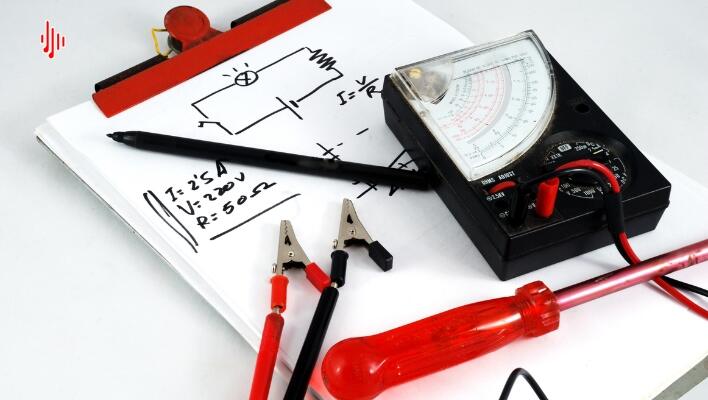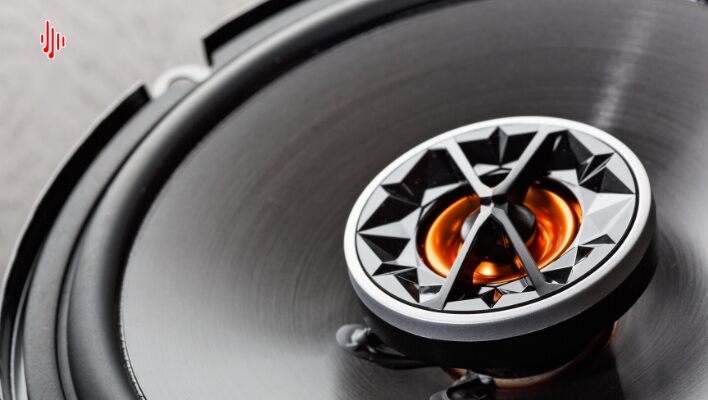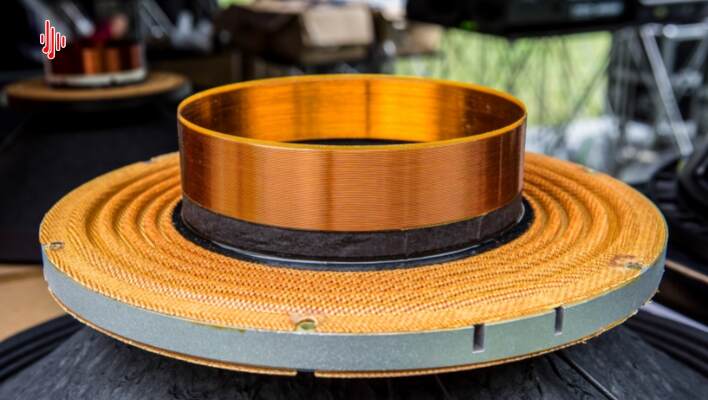If you’re planning on setting up a surround sound system in your home or car audio, you will probably have to choose between 8 ohm vs 16 ohm speakers. This can be a daunting task if you don’t have the correct information.
In order to build a high-performance audio system, there are three crucial things you should know about: power handling capabilities, impedance, and frequency response.
The first thing to note is that all speakers have a different impedance (resistance). This means that the level of current that flows through them depends on their resistance. The higher the resistance, the lower the current, and vice versa. Speakers can be rated as 2,4,8 ohms or 16 ohms. This speaker impedance is an essential factor in the speaker’s performance.
This article will cover what impedance is, how it affects your speakers and how it works with 8 ohms vs 16 ohms types of speakers.
What is Speaker Impedance?
Speaker impedance is a measure of how much resistance your speaker has to the current flowing through it. In other words, it is a measure of the electrical resistance of a speaker. Speaker impedance is measured in Ohms and is usually given as a multiple of 2, such as 8, 10, or 16.
High-impedance speakers are more efficient at converting electrical energy into sound. They require less power than low-impedance speakers to reproduce a given volume level. This means you can use them with lower-wattage amplifiers and still get a decent sound level out of them.
The most common method for calculating speaker impedances is using Ohm’s Law. Calculating the Law formula, take V = I x E and R = E/I (Voltage = Current x Impedance, Resistance = Current / Impedance).

Why Does Impedance Matter in Speakers?
Speaker impedance is essential because it determines how much current a speaker can handle and how much power must be passed through the speaker to drive it.
When connected to a power amplifier, the speaker impedance limits how much power can be sent from the amplifier to the speaker. This means that if you have a speaker with a low impedance, you need a powerful amplifier to drive it. Conversely, if your speaker has high impedance levels, you don’t need as powerful an amplifier because its output is limited by the large resistance that drives it.
In addition to setting a limit on how much power can be sent by an amplifier, speaker impedance also determines how much voltage will be generated by the amplifier when it reaches its maximum output level. If there’s too little voltage across this resistance when reaching maximum output levels, then there won’t be enough energy in your signal for your speakers to reproduce sound correctly. This is called clipping or distortion.
If you want to drive multiple speakers with a single amp, they must all have the same impedance. This is because the amp will try to match them as closely as possible so that they all draw the same amount of current from it.
8 ohm Speakers Overview
8 ohm speakers are designed for high-power amplification. They have a lower impedance rating than 16 ohm speakers but a higher impedance than 4 and 2 ohm speakers. This means that you can drive them harder without losing bass quality or volume.
The 8 ohm speakers are the most popular choice of manufacturers and are used in almost all car audio applications. This is because they have a higher impedance and require less power.
Although 8 ohm speakers can produce high volumes, they are not as good at handling low frequencies (bass) as 4-ohm speakers. So, if you plan on using an amplifier with your 8 ohm speaker system, you’ll need to install a bass boost circuit to compensate for this limitation.

Pros and Cons of 8 ohm Speakers
Pros:
- The low resistance and high-power handling of the 8 ohm voice coil provide a high sound output level.
- The 8-ohm voice coil also allows for more efficient power transmission from the amplifier to the speaker. This allows for a more powerful yet efficient system than a 6 or 4 ohm speaker.
- They produce less distortion and noise than a higher impedance speaker and also handle high power better than lower impedance speakers.
Cons:
- 8-ohm speakers are not typically used for bass because they can’t handle it as well as 6 or 4 ohm speakers.
- They are not efficient enough for high-power applications such as professional sound reinforcement systems or PA systems.
- Low impedance means the speaker needs more power or amplification to produce sound. This can cause problems with low-power amps and subwoofers if adequate protection is not provided from the amp’s output terminals.
16 ohm Speakers Overview
16 ohm speakers are perfect for high-output, high-power systems such as public addresses. They are also the best at handling high volumes. You can expect clear sound at high volumes without distortion or loss of bass when it comes to these speakers.
Additionally, 16 ohm speakers can handle a lot of power, which means they will not get hot and crackle. This makes 16 ohm speakers ideal for use in home theater systems, as well as music and gaming systems. They will also work well with any subwoofer you may have installed.
However, these types of speakers are not ideal for all applications. For example, they’re not suitable for small home audio systems where the speaker’s power handling needs may not be as great. In those cases, you can get away with using a smaller speaker with more modest power handling, such as 8 or 10 ohms.
16 ohm speakers are ideal for use with amplifiers that have built-in equalizers so that you can adjust the bass and treble levels to suit your taste.
Pros and Cons of 16 Ohm Speakers
Pros:
- They’re versatile and can be used with many types of music systems.
- They have a wide frequency response, which means they can reproduce any music signal you play, no matter what type of sound system you use. The frequency response of these speakers is from 70Hz up to 20kHz.
- Because they are so efficient, 16 ohm speakers don’t need much power to produce a loud output. Thus, they’re great for portable devices like smartphones, tablets, and laptops where space is limited, but the sound quality needs to be loud enough to compensate for their size.
- They have better impedance matching than 8 ohm speakers.
- There is less heat generation and less stress on the amplifier or power supply.
Cons:
- The major disadvantage of 16 ohms speakers is that they are more expensive.
Differences Between 8 ohm and 16 ohm Speakers
1. The frequency response is the main difference between 8 ohm and 16 ohm speakers—the lower the impedance, the lower the frequency response. Lower impedance speakers will have a wider bass range and more bass output but tend to distort at high volume levels.
2. 8 ohms speakers are commonly used with amps that produce low output levels, while 16 ohms are often used with amps that produce high output levels.
3. The 16 ohm speakers produce less distortion than 8 ohm speakers.
4. The 8 ohm speaker can connect to an amplifier with a higher voltage, which allows the amplifier to provide more power to the speaker. The 16 ohm speaker requires more power from an amplifier because it needs more voltage to drive it.
5. The 8 ohm speaker does not produce as much sound as the 16 ohm speaker because it uses less energy per watt in its coil.
6. 8 ohm speakers are cheaper than 16 ohm speakers. The cost difference between 16 and 8 ohm speakers can be significant, especially in the case of high-end models.

Does Speaker Impedance Affect Sound and Tone?
If you have speakers with high impedances that are not properly matched with your amplifier or receiver, you may experience audio distortion or even some loss of sound quality. This can happen if there is a mismatch between your amplifier’s power output and your speakers’ impedance.
Low-impedance speakers are typically used with receivers with a high output power capability because they have less resistance than high-impedance speakers. They also work well with amplifiers with lower output power ratings because they dissipate heat quicker and require less power to operate at full volume.
Therefore, to avoid poor sound quality, ensure you carefully match the speakers’ impedance and amplifiers’ impedance. If you do this correctly, it should not affect the quality of the audio.
Factors Affecting Speaker’s Sound Quality and Tone
So, if speaker impendence doesn’t significantly affect sound quality and tone, what does? The following are some of the factors:
1. Frequency response
This is how wide the range of sounds the speaker can reproduce. The frequency response is measured in Hertz (Hz). A high-frequency response means that low frequencies can be reproduced with greater accuracy, while a narrow-frequency response could mean that higher tones are muffled or lost.
2. Power handling capacity
This is how much power the speaker can handle before damaging itself. A high power handling capacity means you can play your music at higher volumes without damaging your speakers or causing distortion in the sound quality.
3. Efficiency
A high efficiency means that more power will be converted into sound waves. This produces louder volume levels as well as fuller and richer-sounding music reproduction with less distortion.
4. The room acoustics
This is the entire space in which sound can be heard. No two rooms are the same, so there are always variables that affect how well a given set of speakers will perform in a particular room.
5. Parallel and series setup
A parallel speaker configuration consists of two or more speakers connected to one another. The output from each speaker is mixed together at a single point and then sent out into the room via your amplifier or receiver. In this case, each speaker’s drivers work together to produce sound.
A series configuration consists of two or more speakers connected end-to-end to share a common wire. Each driver in the system works independently from one another, but they’re all in a line going to your amp or receiver.
Final Word
In the battle of 8 ohm vs 16 ohm speakers, it is not entirely true that 8 ohm speakers sound better than 16 ohm speakers or vice versa. Both types of speakers work on the same principle in terms of resistance and impedance. It would be helpful for you to focus on all other aspects affecting sound quality and tone. These include the quality of your equipment and speakers, how you set up your audio system (speakers in parallel or wired in series), and how you use the speakers.
Additionally, before you get entangled in observing numerous different specs, it is essential to note that power handling is the most critical component. Both the power your speakers require and the power your amplifier can supply. With an amp that can supply around 100W per channel void of distortion, you don’t have to worry about underpowering your speakers.
